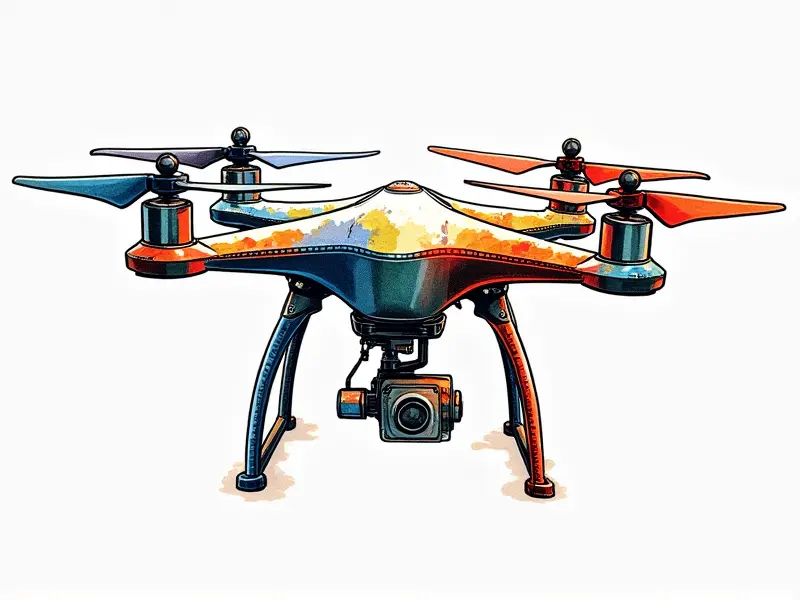Can I build a racing drone?

Building Your First Racing Drone
Are you interested in the exhilarating world of drone racing but unsure where to start? Building your first FPV (First Person View) racing drone is an exciting and rewarding endeavor. This guide will walk you through the process, from selecting parts to assembling a fully functional racing drone.
DIY FPV Racing Drone Guide
The journey of building a DIY FPV racing drone begins with understanding its components and how they work together. Here’s what you need:
- Flying Frame: Choose a lightweight frame that supports the motors, ESCs (Electronic Speed Controllers), battery, and camera.
- Motors: High-performance brushless motors are essential for speed and agility.
- ESC: These control the motor's RPM based on input from your transmitter.
- Battery: A high-capacity LiPo battery powers your drone.
- Flight Controller: This brain of the drone processes data and controls stability.
- Camera & Video Transmitter (VTX): For FPV viewing, you need a camera and VTX to transmit video feed.
How to Construct a Racing Drone
Constructing your racing drone involves several steps:
- Select Components: Choose high-quality parts that meet your performance requirements.
- Assemble Frame: Attach the motors, ESCs, and flight controller to the frame securely.
- Install Battery & Camera: Place the battery in a convenient location for easy access. Mount the camera and VTX.
- Connect Wiring: Connect all components according to your wiring diagram.
Step-by-Step RC Racing Drone Build
Building an FPV racing drone step-by-step ensures a smooth process. Here’s how you can do it:
- Frame Assembly: Start by assembling the frame, ensuring all parts fit snugly.
- Motor & ESC Installation: Install motors and connect them to ESCs.
- Battery Placement: Secure the battery in a position that maintains balance.
- Flight Controller Setup: Connect flight controller wires to ESCs, power distribution board (PDB), and other components.
- Camera & VTX Integration: Mount your camera and connect it to the VTX for FPV viewing.
Crafting an FPV Drone for Speed
To craft a racing drone that delivers speed, focus on these aspects:
- Lightweight Frame: Opt for frames made of carbon fiber or other lightweight materials.
- High-Torque Motors: Choose motors with high KV ratings for better performance.
- Efficient ESCs: Use ESCs that are optimized for racing drones.
Assembly Tips for Racing Drones
Here are some tips to ensure a successful assembly:
- Use Quality Tools: Invest in good-quality tools like screwdrivers and soldering irons.
- Follow Wiring Diagrams: Carefully follow wiring diagrams to avoid errors.
- Test Components Individually: Test each component before assembly for optimal performance.
From Parts to Flight: Building a Drone
The transition from parts to flight involves several crucial steps:
- Initial Setup: Assemble the frame and install motors, ESCs, battery, and flight controller.
- Wiring & Testing: Connect all components and test each part individually for functionality.
- Calibration: Calibrate your drone’s sensors to ensure accurate performance.
- First Flight: Conduct a short indoor flight to check stability and responsiveness.
Quick Start: Building an FPV Racing Drone
If you’re eager to get started, follow these quick steps:
- Select your frame and components based on performance needs.
- Assemble the frame and install motors and ESCs.
- Mount battery and flight controller.
- Connect all wiring and test each component individually.
Beginner's Guide to Making a Drone Race
Making your first FPV racing drone is an exciting challenge. Here’s what beginners need to know:
- Understand Components: Learn about each part and its function.
- Choose Quality Parts: Invest in high-quality components for better performance.
- Follow Assembly Instructions: Carefully follow assembly instructions to avoid mistakes.
Assembling an RC Racing Drone
The process of assembling a racing drone is both challenging and rewarding. Here’s how you can do it:
- Select Components: Choose parts that meet your performance requirements.
- Frame Assembly: Assemble the frame, ensuring all parts fit securely.
- Motor & ESC Installation: Install motors and connect them to ESCs.
- Battery Placement: Secure the battery in a position that maintains balance.
The Art of Building Racing Drones
Building racing drones is an art form that requires precision, patience, and technical knowledge. Here’s how to master it:
- Understand Aerodynamics: Learn about aerodynamic principles for better performance.
- Practice Assembly: Practice assembling different configurations to improve your skills.
- Test & Iterate: Test your drone frequently and make adjustments as needed.
Conclusion
Building a racing drone is an exciting journey that combines technical skill, creativity, and passion. By following this guide, you’ll be well on your way to constructing a high-performance FPV racing drone. Whether you’re a beginner or looking to upgrade your setup, the process of building a racing drone offers endless opportunities for learning and enjoyment.

